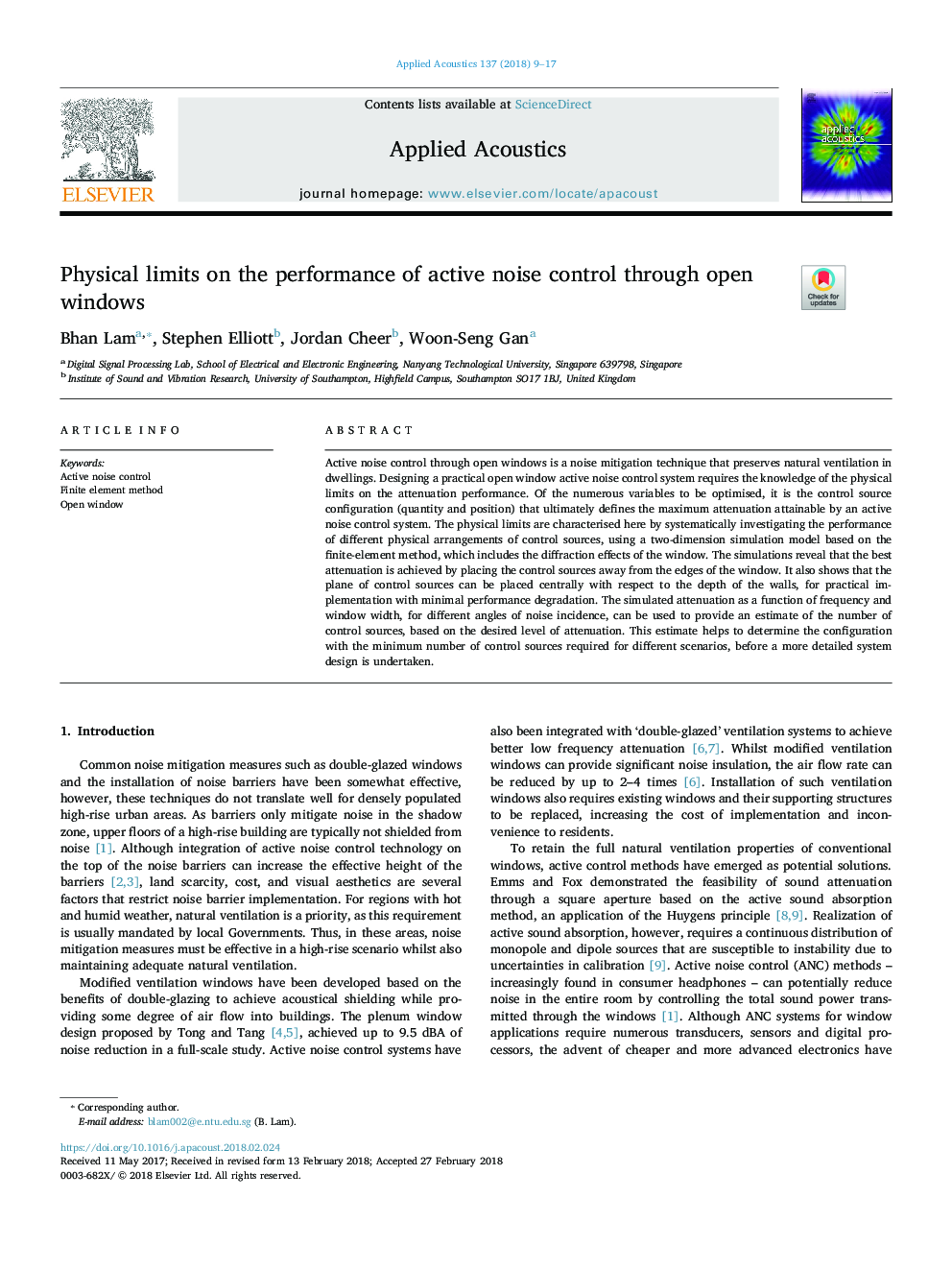| Article ID | Journal | Published Year | Pages | File Type |
|---|---|---|---|---|
| 7152196 | Applied Acoustics | 2018 | 9 Pages |
Abstract
Active noise control through open windows is a noise mitigation technique that preserves natural ventilation in dwellings. Designing a practical open window active noise control system requires the knowledge of the physical limits on the attenuation performance. Of the numerous variables to be optimised, it is the control source configuration (quantity and position) that ultimately defines the maximum attenuation attainable by an active noise control system. The physical limits are characterised here by systematically investigating the performance of different physical arrangements of control sources, using a two-dimension simulation model based on the finite-element method, which includes the diffraction effects of the window. The simulations reveal that the best attenuation is achieved by placing the control sources away from the edges of the window. It also shows that the plane of control sources can be placed centrally with respect to the depth of the walls, for practical implementation with minimal performance degradation. The simulated attenuation as a function of frequency and window width, for different angles of noise incidence, can be used to provide an estimate of the number of control sources, based on the desired level of attenuation. This estimate helps to determine the configuration with the minimum number of control sources required for different scenarios, before a more detailed system design is undertaken.
Related Topics
Physical Sciences and Engineering
Engineering
Mechanical Engineering
Authors
Bhan Lam, Stephen Elliott, Jordan Cheer, Woon-Seng Gan,
